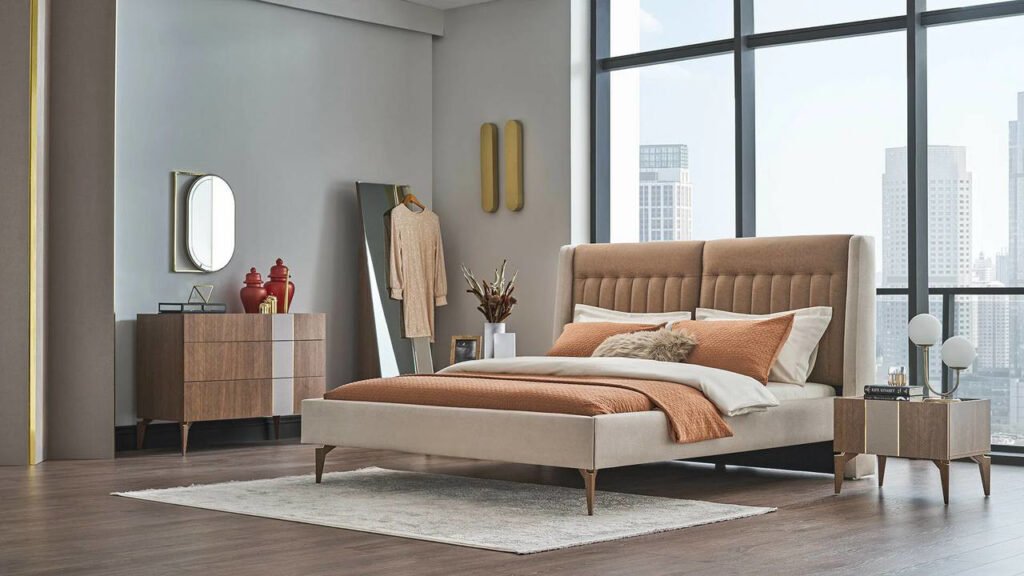Equipping your home with new furniture is always exciting because you get to buy yourself a new set of comfortable things that will make your life and your family better and more enjoyable. It does not matter what you are getting. If it is replacing an old and worn piece of furniture, there is no denying that you will be doing yourself a great favour. For most people, the bedroom is the most important part of the house because it is where they recharge, relax, and rest. If such a place is not to your liking and you cannot be at peace once you go through the door, the quality of your whole life is at stake, and so is your happiness.
With that being said, and to help you organize your bedroom, we dedicate this article to the topic of how big your bed should be in comparison to the size of your bedroom. Many people make mistakes when buying new furniture, regretting it later. Suppose you do not want to be among them; carefully read through what we say.
Bed Sizes
Before we can talk about the right balance between the bedroom and bed sizes, we have to touch upon the standard sizes of available beds on the market. Mind that the bed frame will add a few extra inches to the following mattress dimensions, so account for that as well. Toddler mattresses are 2ft 6, singles are 3ft, and the largest singles are 3ft 6 beds.
These are the general single sizes most furniture shops will have and are good guidelines for your decision. Depending on your bedroom size, you may be limited to only a few options.
How to Save Bedroom Space?
The last thing we need out of the way before discussing the bed and bedroom size balance is how to save up the most space and get the biggest bed available. First, you should think about buying a bed that has built-in storage. This will allow you the luxury of not having too many drawers and closets around the bed. If you must use a few wardrobes, closets, or drawers, make sure they have sliding doors to save space when opening them. Furthermore, storage containers and separators will allow you to better organize the clothing and other items you keep in your bedroom. Maybe the whole layout is in desperate need of rearrangement, or maybe you need a few extra pieces to tie everything together. Do not forget to use the height of the room and free up the floor space, as it will allow you to get a bigger bed.
Working Out The Perfect Size
Now we get to the good part and talk about how you can know if the bed and the bedroom are in perfect harmony. Most people who like the science behind such a decision opts for the 3:1 ratio or having three bedrooms for every one-part bed. If you put the bed against the longer wall in the middle and face it outward, there should be an equal amount of space to the sides and enough room to walk around the bed and between the furniture. If the bedroom size is 15 x 11, for example, the bed should be around 11 x 9. So, the head of the bed is pressed against the longer wall you have, and plenty of room needs to exist for you and your partner to walk on either side as well as the outward side facing the furniture.
Consider this if you want even more science behind this seemingly easy-to-tackle problem. There are beliefs that the Vitruvian man and the ideal sizes of men and women, as well as the average shoulder width of adults over 40+ cm, would need the bed to be around 250 x 190 cm. According to this calculation, the super king-size bed of 232 x 190 cm is the best solution and the perfect bed for two adult people of any size to share. This is, of course, hardly possible for all situations, but the principle and proportions should be largely the same. If one-third of your bedroom is the bed, you will have enough space to walk around and store your things.
Finally, you can also use the 60-30-10 rule that interior designers have come up with to make and suggest the best and most optimal solutions, no matter the size or the design of the room or the furniture. According to this, 60% of the design is the primary colour, 30% is secondary, and 10% is accent, making it all pop out more. If we were to adapt this rule to space and not colour, 60% of your bedroom would be all the furniture, 30% would be the walking area that is cleared off, and the remaining 10% would be the unused space where you cannot really put anything or walk on, the bits and bobs if you will. If you make the bed at least half, or maybe even two-thirds of your furniture space, depending on how big you want it, you will be doing the most regarding space organization, storage, and comfort.
All in all, the perfect ratio seems to revolve around the 3:1 or 60-30-10 approaches. It is a very subjective and specific decision because no bedroom and bed combinations are identical, so it is up to you. With this information, however, you will conclude and do the right thing much more easily.







